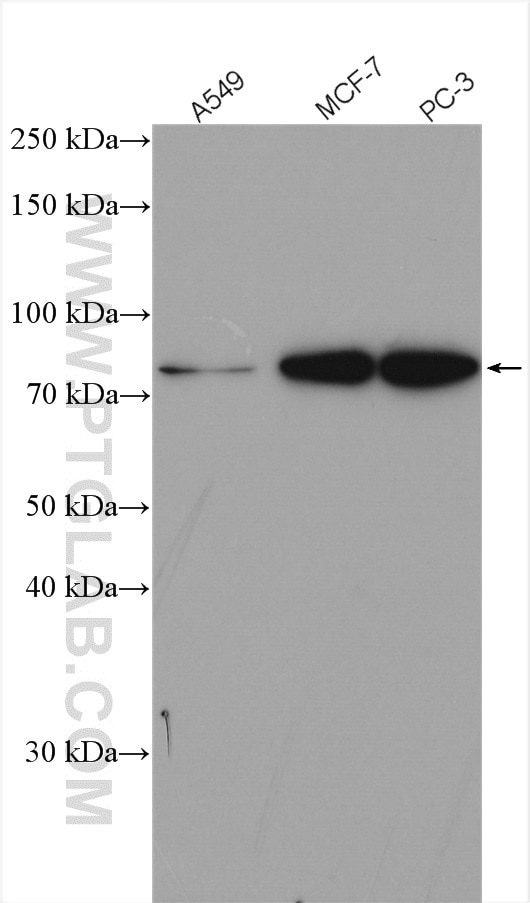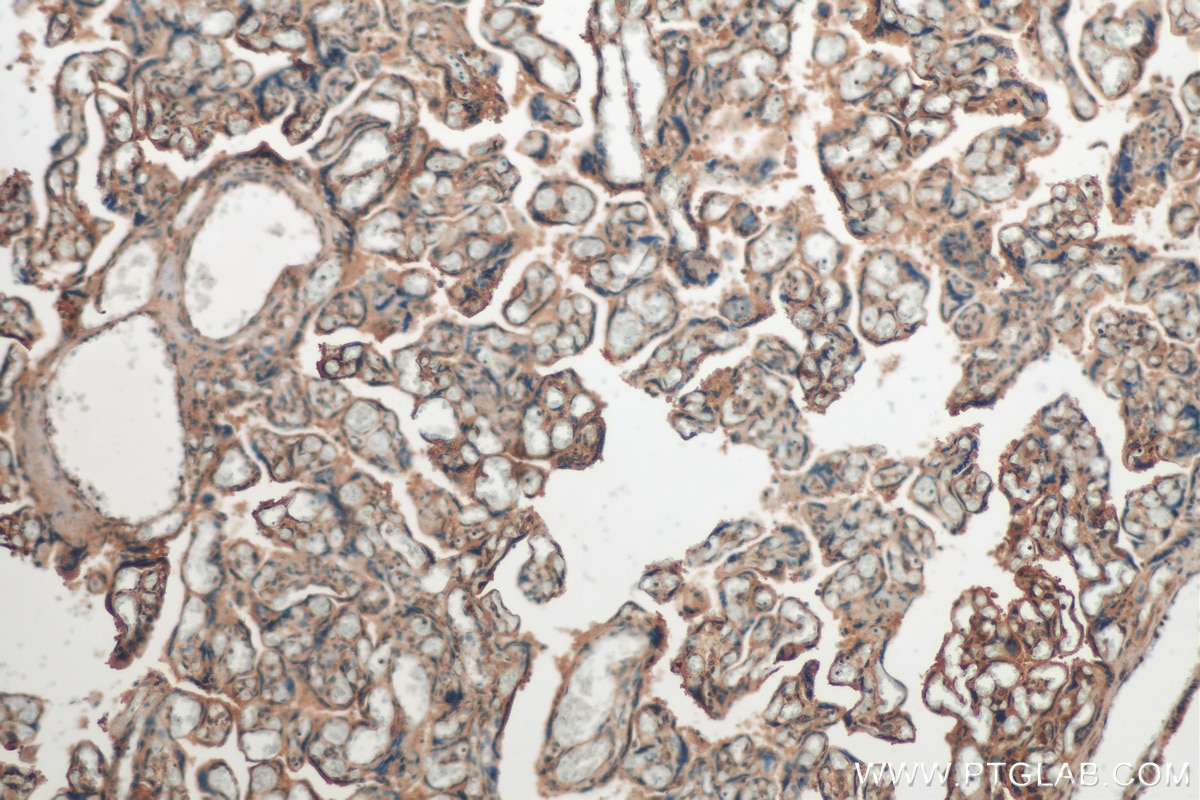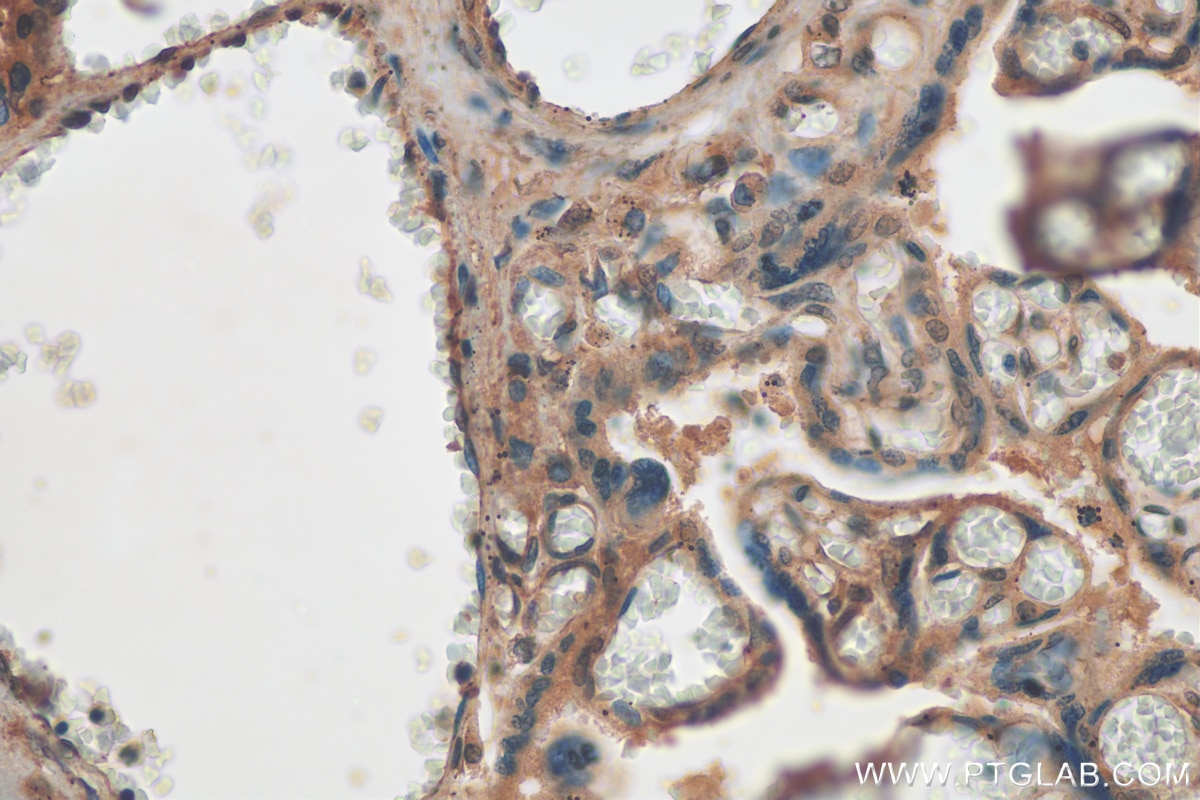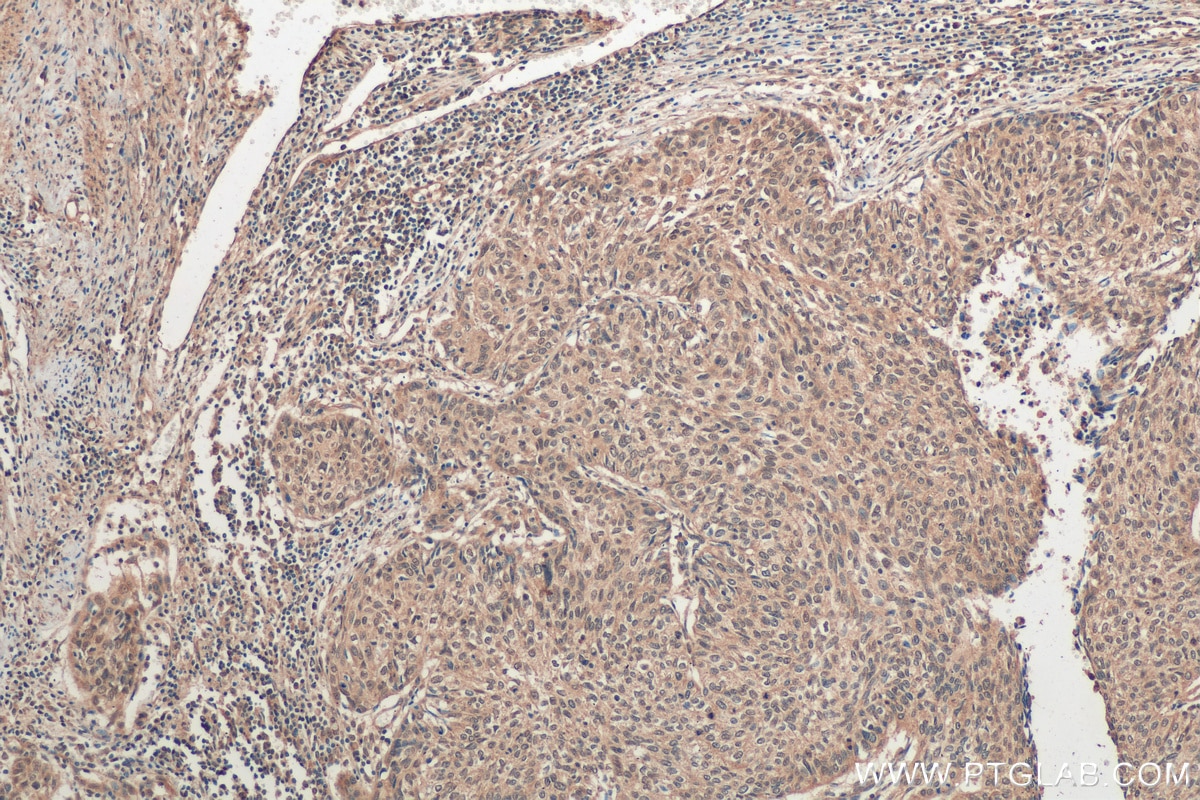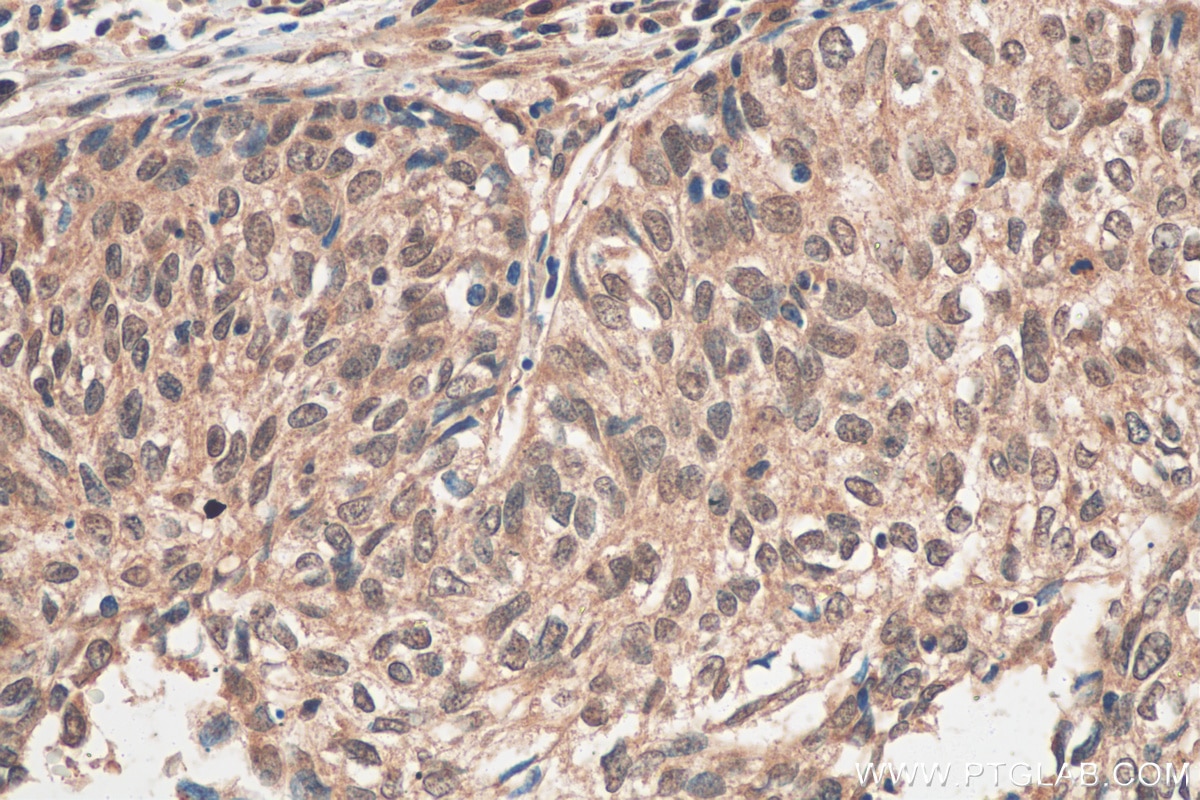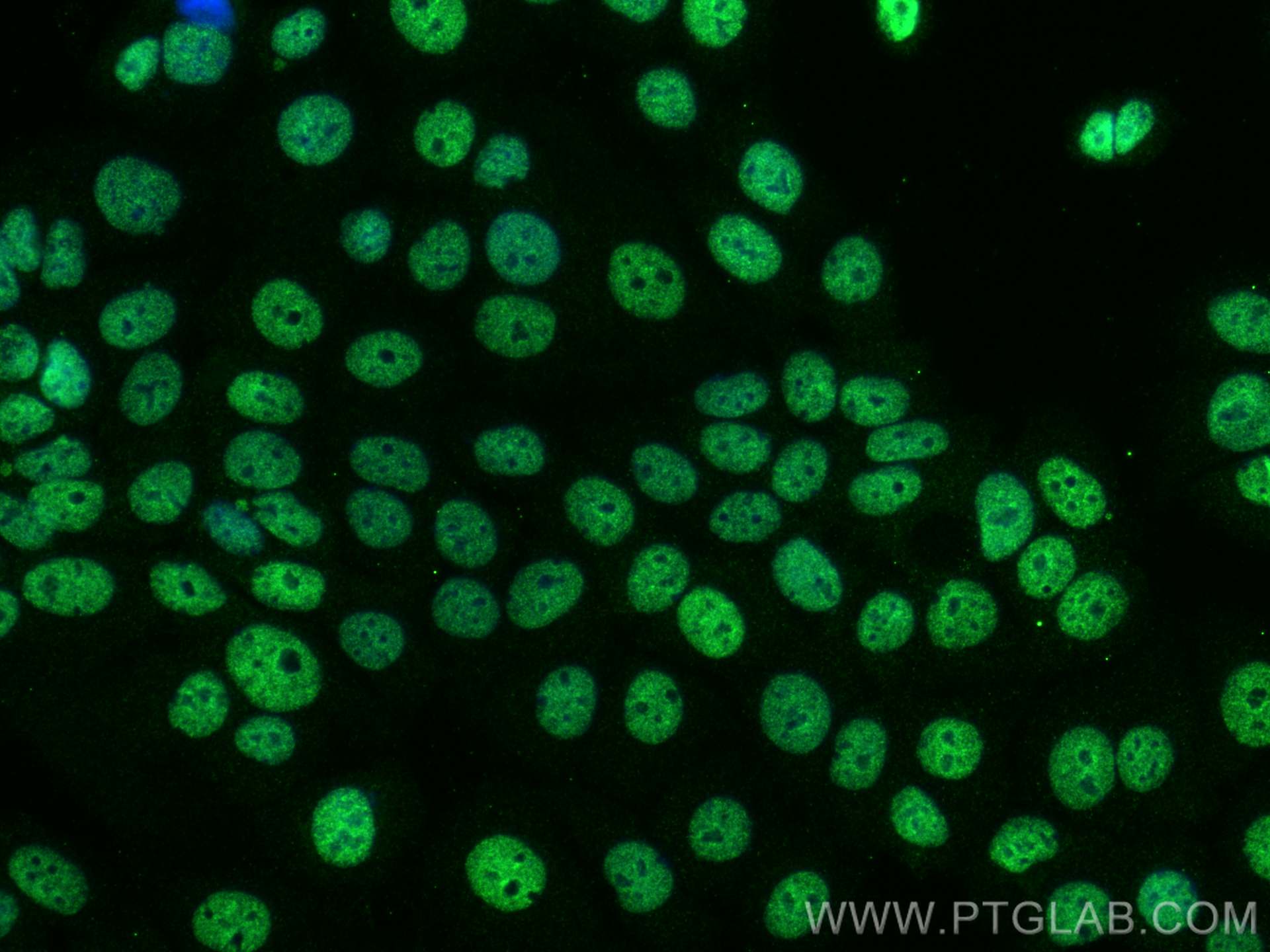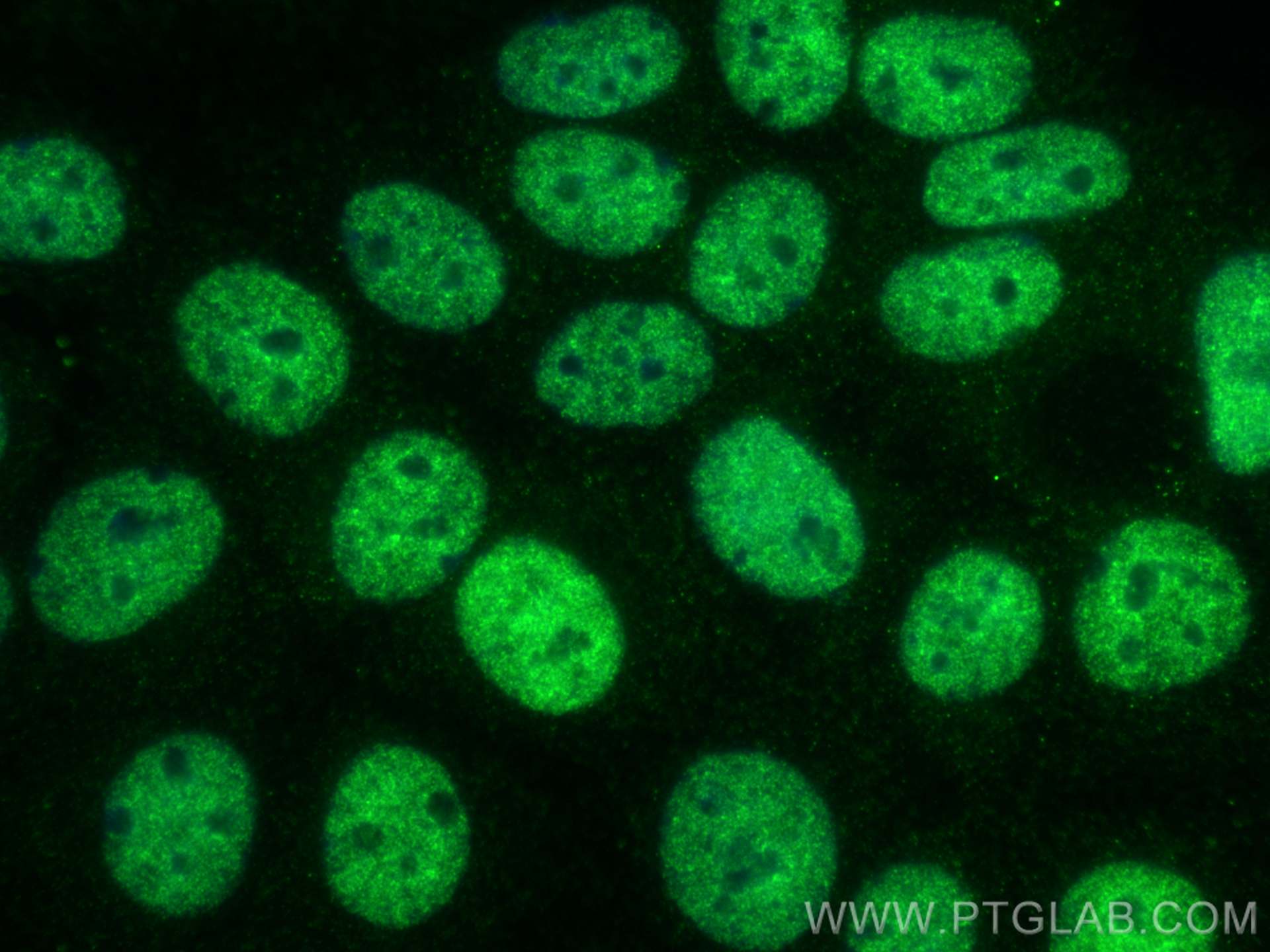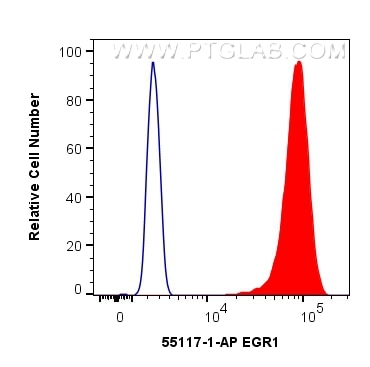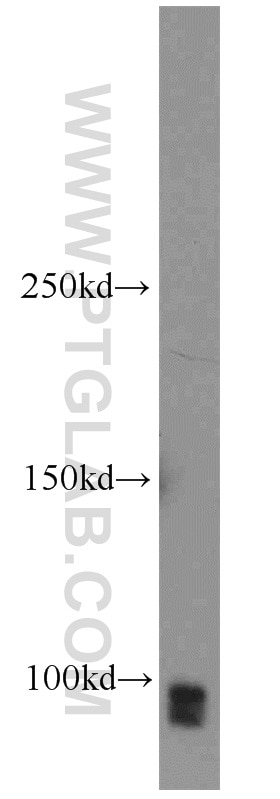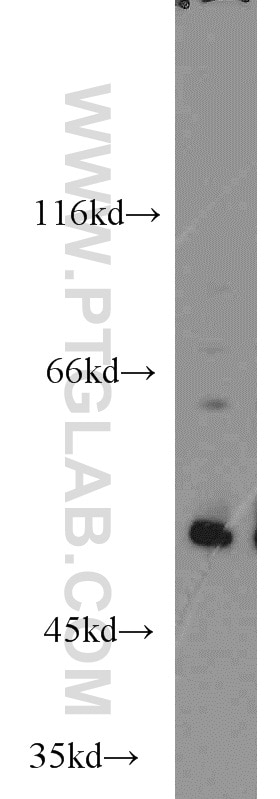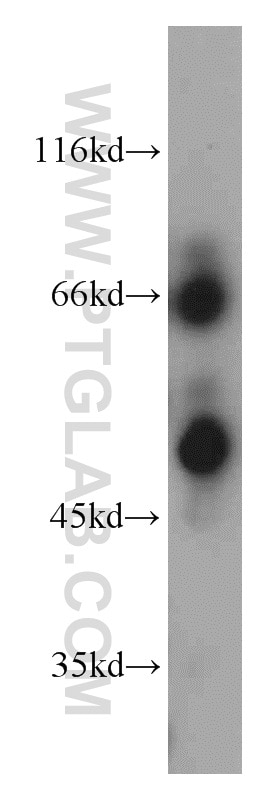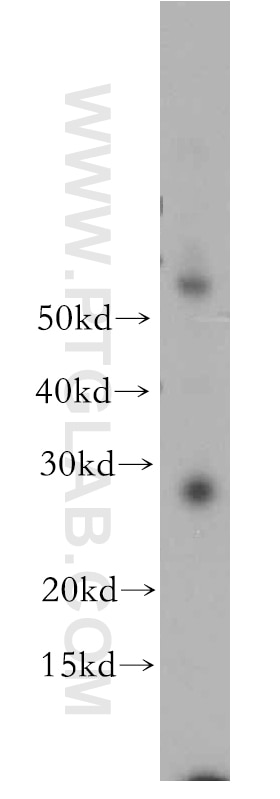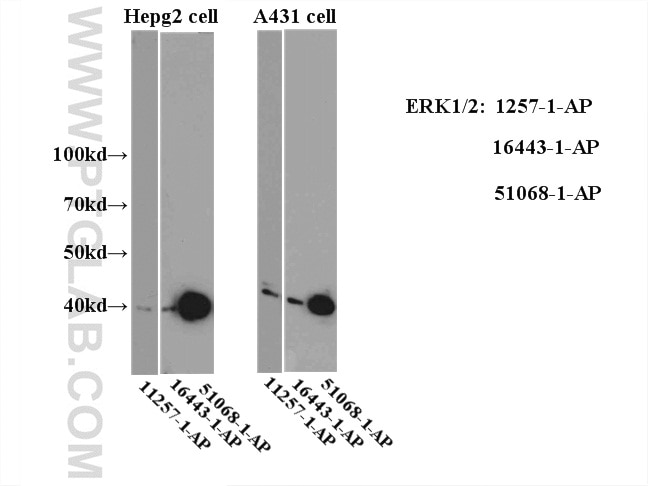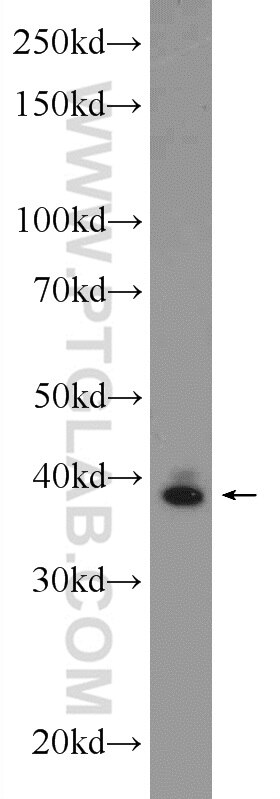- Featured Product
- KD/KO Validated
EGR1 Polyclonal antibody
EGR1 Polyclonal Antibody for WB, IF, FC, IHC, ELISA
Host / Isotype
Rabbit / IgG
Reactivity
human, mouse
Applications
WB, IF, FC, IHC, ELISA
Conjugate
Unconjugated
Cat no : 55117-1-AP
Synonyms
Validation Data Gallery
Tested Applications
| Positive WB detected in | A549 cells, MCF-7 cells, PC-3 cells |
| Positive IHC detected in | human placenta tissue, human cervical cancer tissue Note: suggested antigen retrieval with TE buffer pH 9.0; (*) Alternatively, antigen retrieval may be performed with citrate buffer pH 6.0 |
| Positive IF detected in | MCF-7 cells |
| Positive FC detected in | MCF-7 cells |
Recommended dilution
| Application | Dilution |
|---|---|
| Western Blot (WB) | WB : 1:500-1:1000 |
| Immunohistochemistry (IHC) | IHC : 1:50-1:500 |
| Immunofluorescence (IF) | IF : 1:200-1:800 |
| Flow Cytometry (FC) | FC : 0.40 ug per 10^6 cells in a 100 µl suspension |
| It is recommended that this reagent should be titrated in each testing system to obtain optimal results. | |
| Sample-dependent, Check data in validation data gallery. | |
Published Applications
| KD/KO | See 2 publications below |
| WB | See 17 publications below |
| IHC | See 3 publications below |
| IF | See 3 publications below |
Product Information
55117-1-AP targets EGR1 in WB, IF, FC, IHC, ELISA applications and shows reactivity with human, mouse samples.
| Tested Reactivity | human, mouse |
| Cited Reactivity | human, mouse |
| Host / Isotype | Rabbit / IgG |
| Class | Polyclonal |
| Type | Antibody |
| Immunogen | Peptide |
| Full Name | early growth response 1 |
| Calculated Molecular Weight | 58 kDa |
| Observed Molecular Weight | 70-80 kDa |
| GenBank Accession Number | NM_001964 |
| Gene Symbol | EGR1 |
| Gene ID (NCBI) | 1958 |
| RRID | AB_2881272 |
| Conjugate | Unconjugated |
| Form | Liquid |
| Purification Method | Antigen affinity purification |
| Storage Buffer | PBS with 0.02% sodium azide and 50% glycerol pH 7.3. |
| Storage Conditions | Store at -20°C. Stable for one year after shipment. Aliquoting is unnecessary for -20oC storage. 20ul sizes contain 0.1% BSA. |
Background Information
Early growth response 1 (EGR1) is a member of EGR family which are transcriptional factors that contain three repetitive zinc finger DNA binding domains which bind to EGR response elements (ER) to regulate target gene expression. The expression of EGR family members is induced by growth factors, with EGR1 expression being induced by NGF. Increased EGR1 expression activates transcription of other signaling molecules, including CDK5 and tyrosine hydroxylase, and exerts long term effects on neural cell growth and differentiation. Egr-1 binds to the DNA sequence 5'-CGCCCCCGC-3' (Egr-site), thereby activating transcription of target genes whose products are required for mitogenesis and differentiation. Western blotting of nuclear and cytoplasmic fractions of CNS tissue verified the cytoplasmic Egr1 as 110-kDa dimer or after denaturation as a 57-kDa version, which is reflecting its theoretical molecular weight of 57 kDa. In the nucleus Egr1 is found as 75-kDa homo- or heterodimer and as 35-kDa variant under strong denaturation.
Protocols
| Product Specific Protocols | |
|---|---|
| WB protocol for EGR1 antibody 55117-1-AP | Download protocol |
| IHC protocol for EGR1 antibody 55117-1-AP | Download protocol |
| IF protocol for EGR1 antibody 55117-1-AP | Download protocol |
| FC protocol for EGR1 antibody 55117-1-AP | Download protocol |
| Standard Protocols | |
|---|---|
| Click here to view our Standard Protocols |
Publications
| Species | Application | Title |
|---|---|---|
Neuron Astrocytic ApoE reprograms neuronal cholesterol metabolism and histone-acetylation-mediated memory. | ||
Nat Commun Single-cell analysis of murine fibroblasts identifies neonatal to adult switching that regulates cardiomyocyte maturation. | ||
Oncogene N6-methyladenosine reader YTHDF2 promotes multiple myeloma cell proliferation through EGR1/p21cip1/waf1/CDK2-Cyclin E1 axis-mediated cell cycle transition | ||
Int Immunopharmacol DDIT3 aggravates pulpitis by modulating M1 polarization through EGR1 in macrophages | ||
Mol Neurobiol Satb2 Ablation Impairs Hippocampus-Based Long-Term Spatial Memory and Short-Term Working Memory and Immediate Early Genes (IEGs)-Mediated Hippocampal Synaptic Plasticity. | ||
Talanta MnO2-DNAzyme-photosensitizer nanocomposite with AIE characteristic for cell imaging and photodynamic-gene therapy. |
